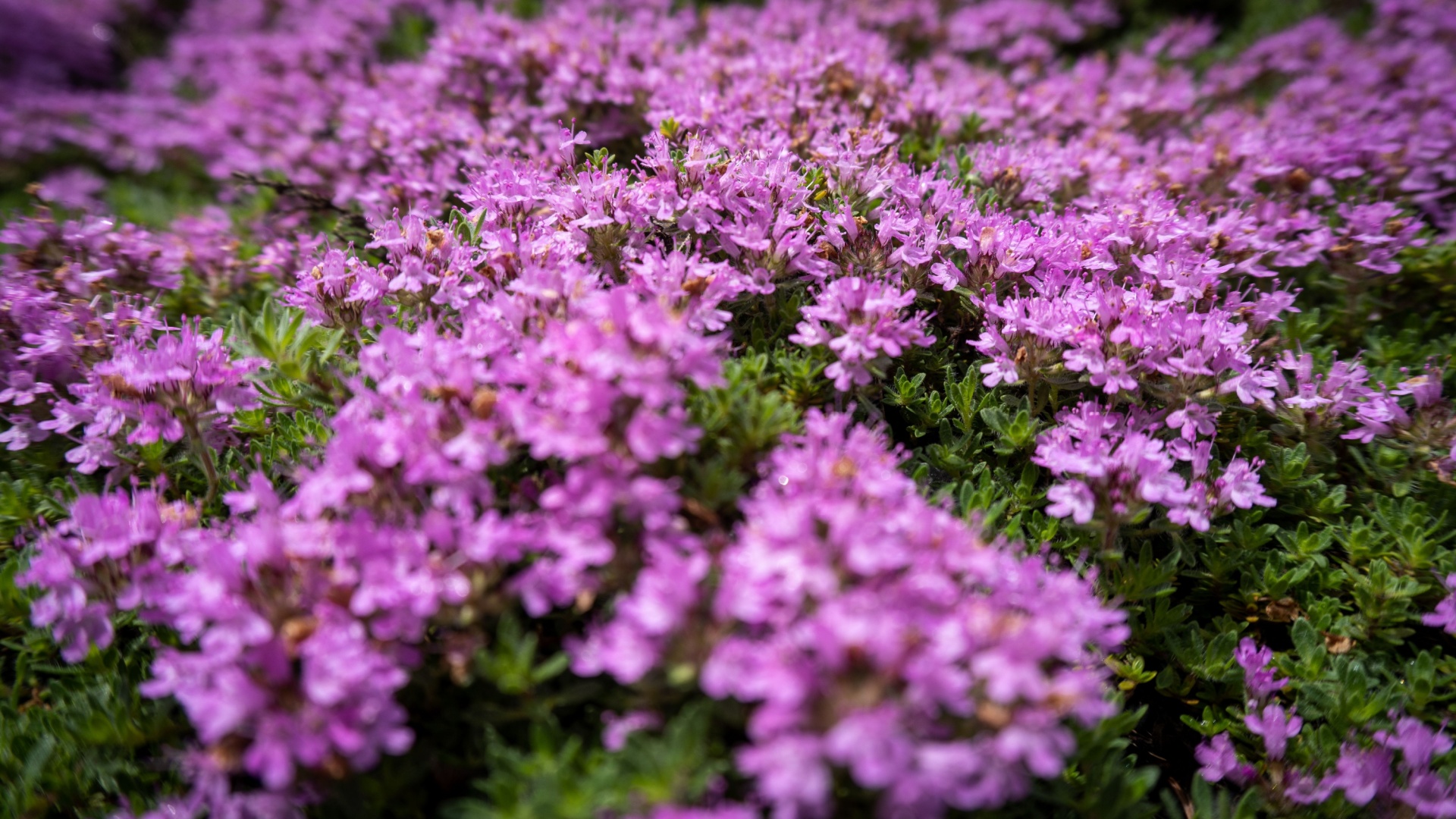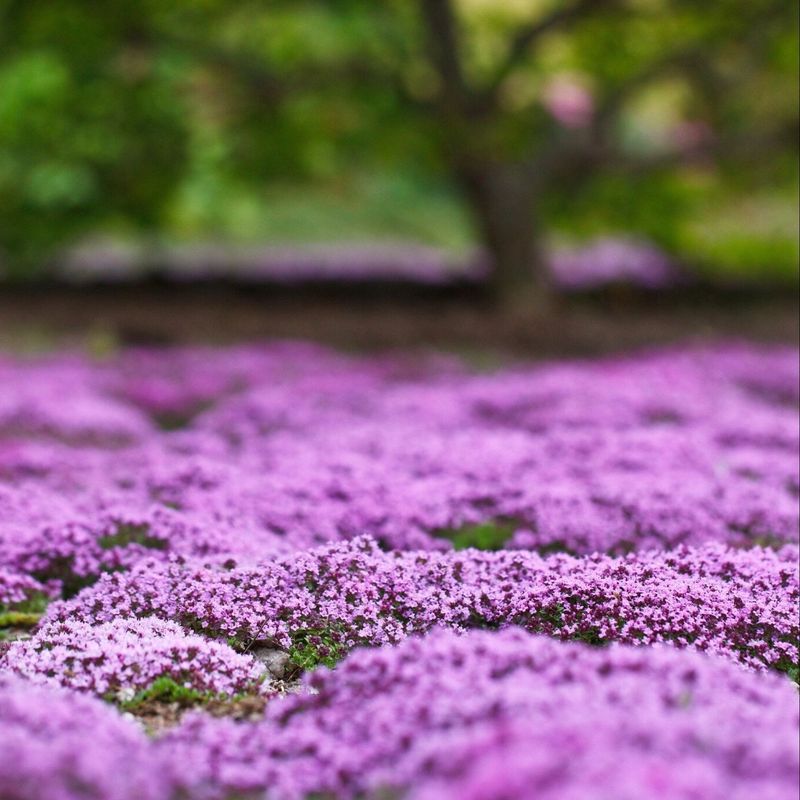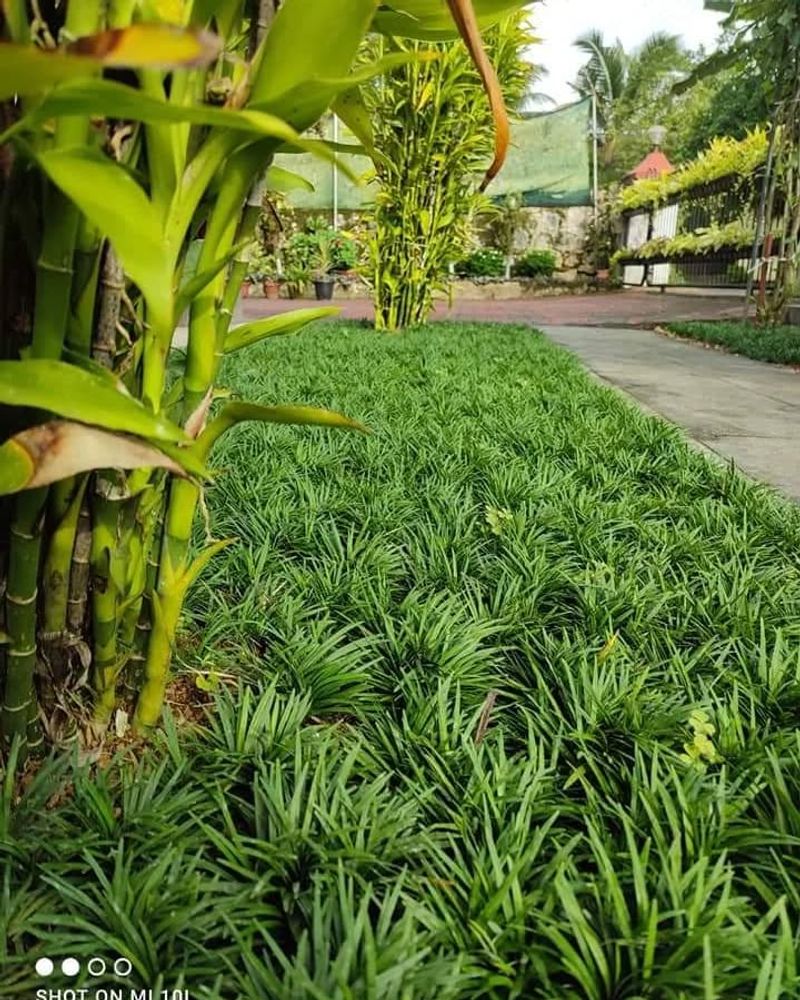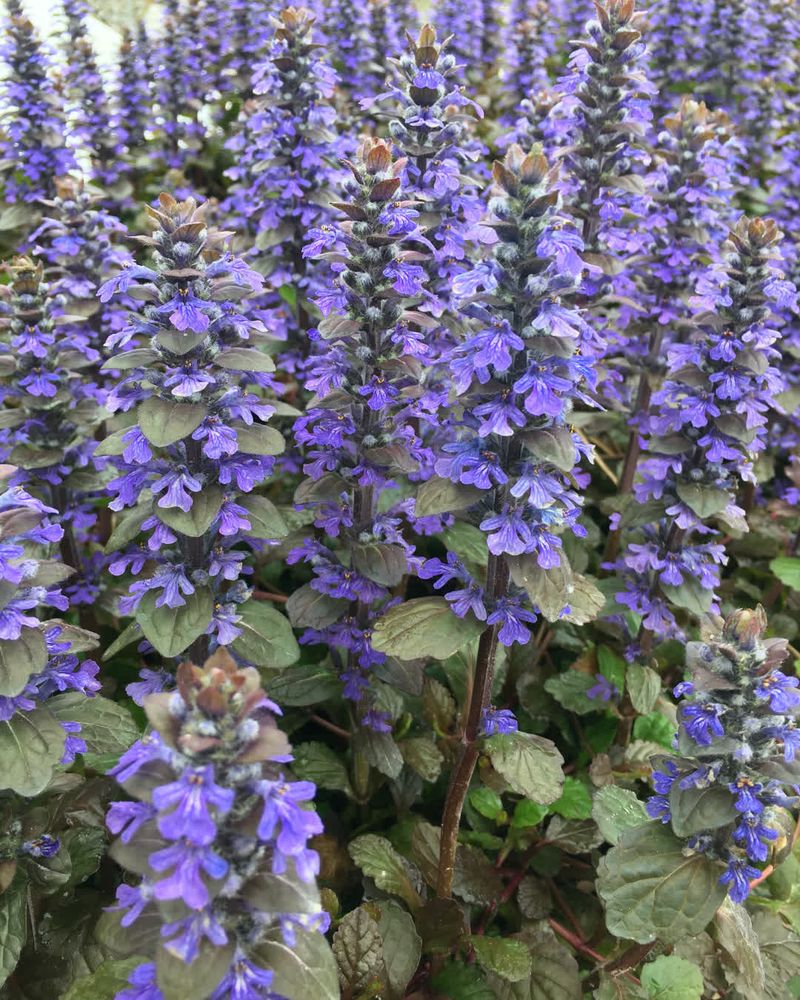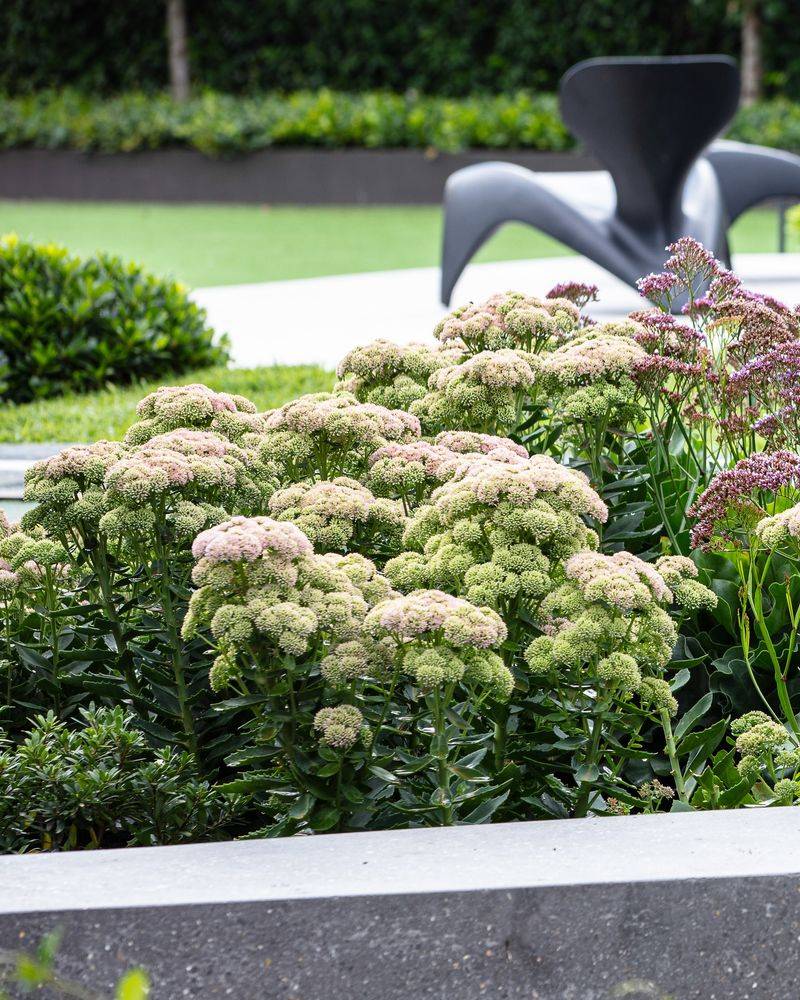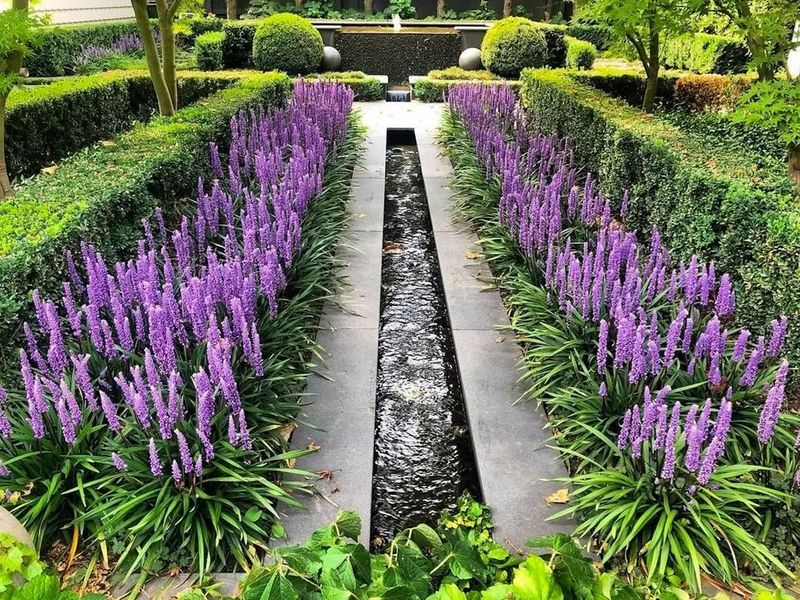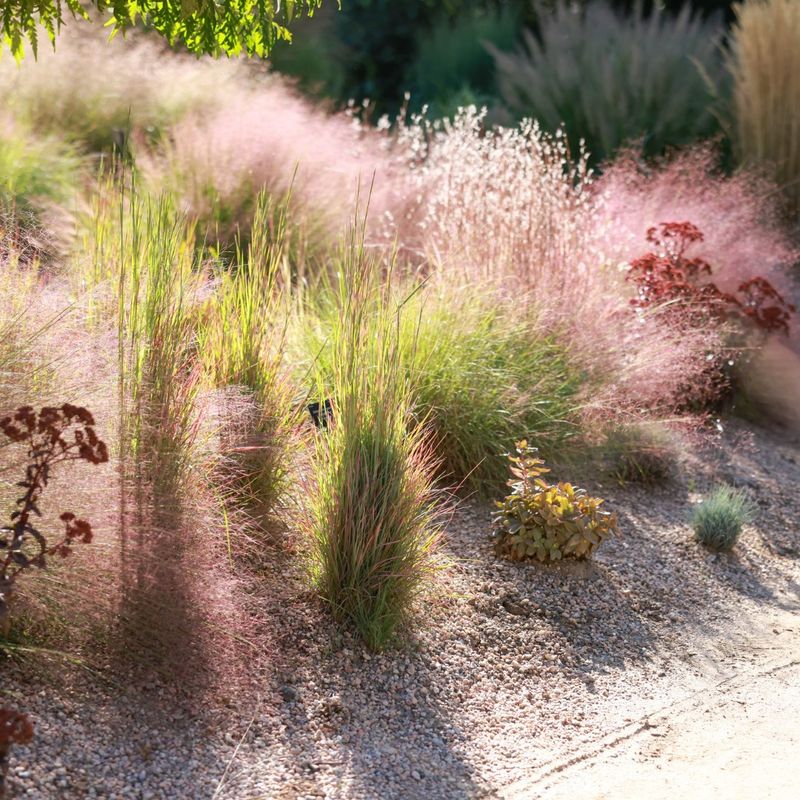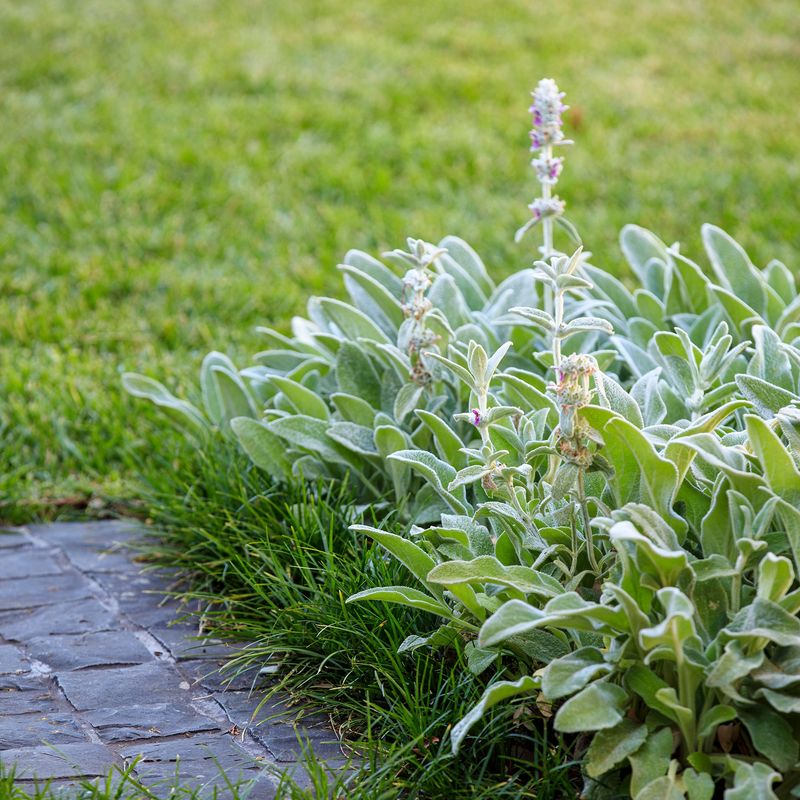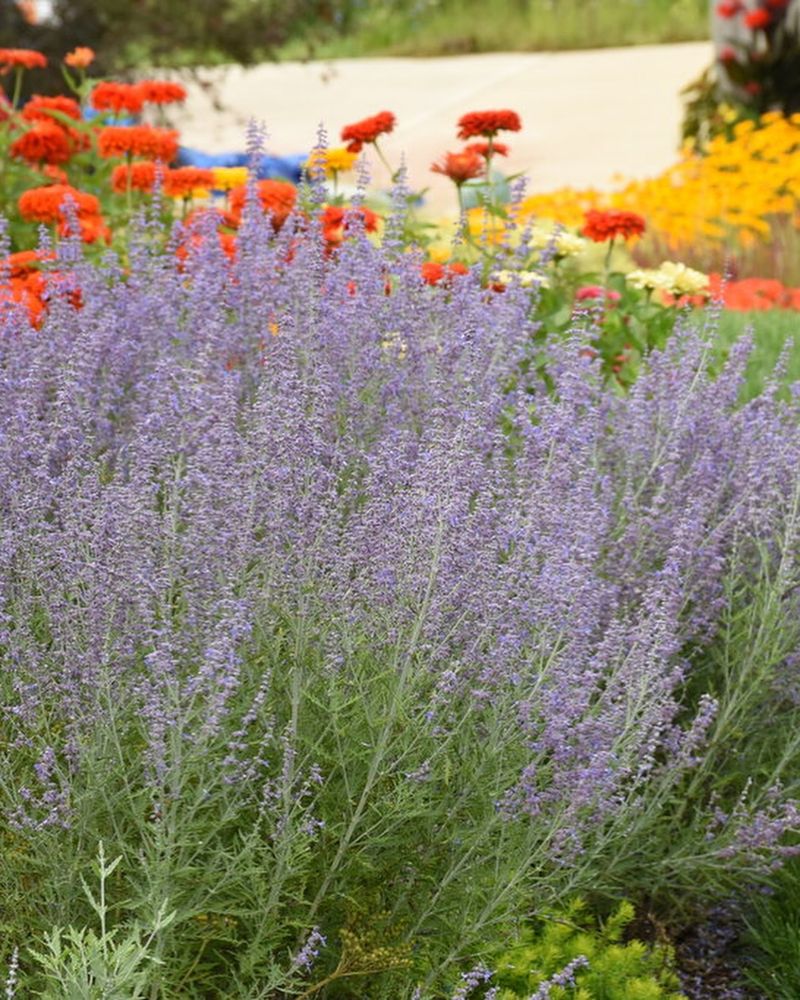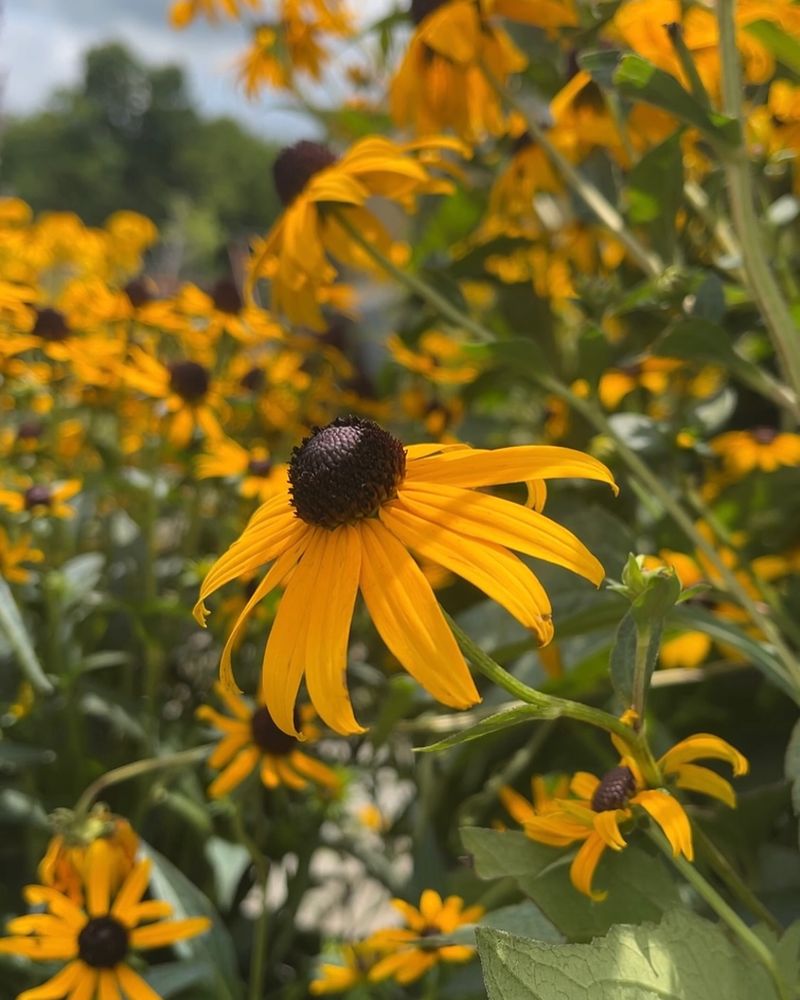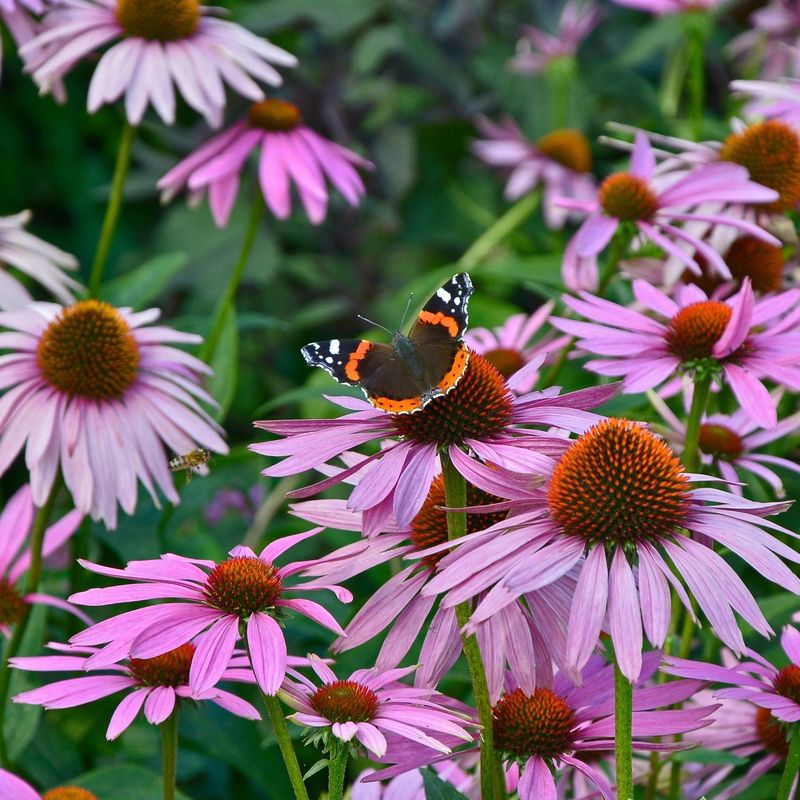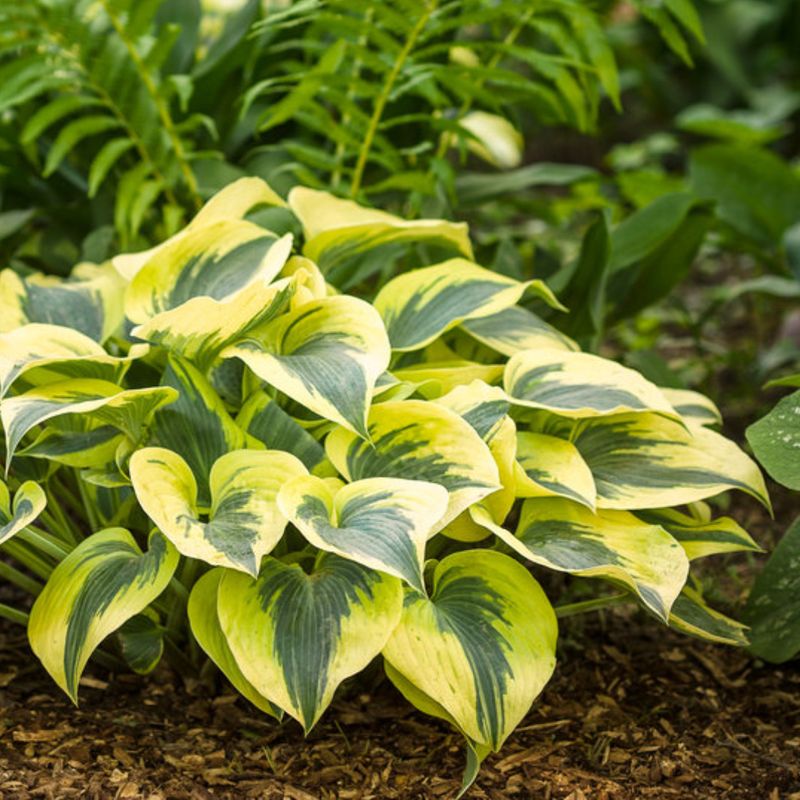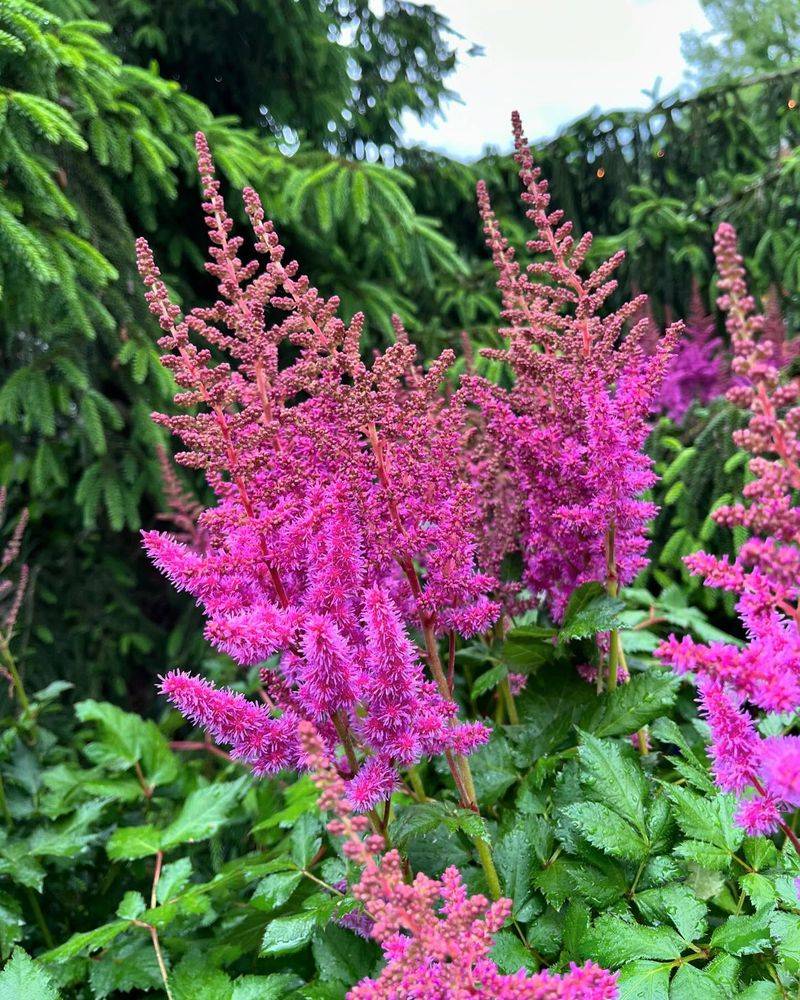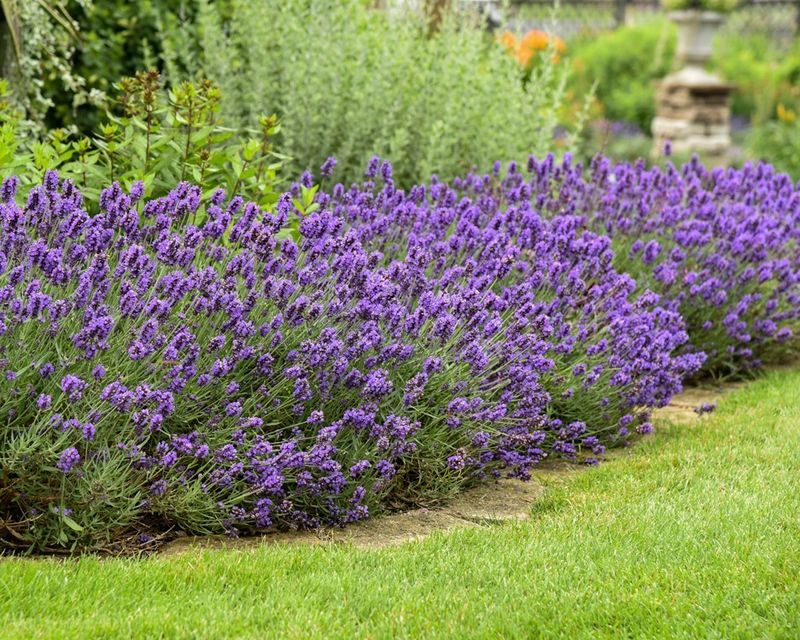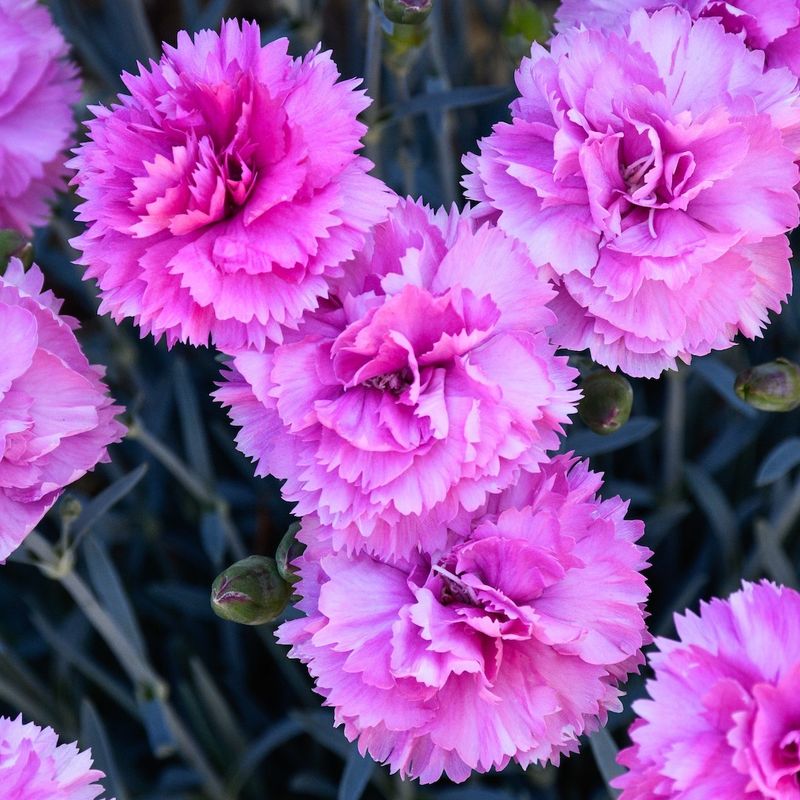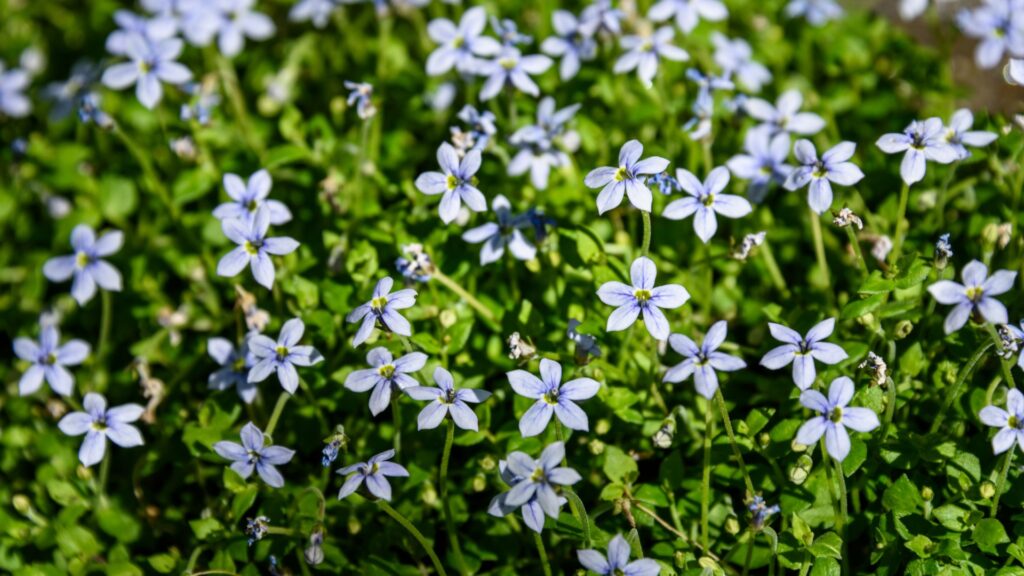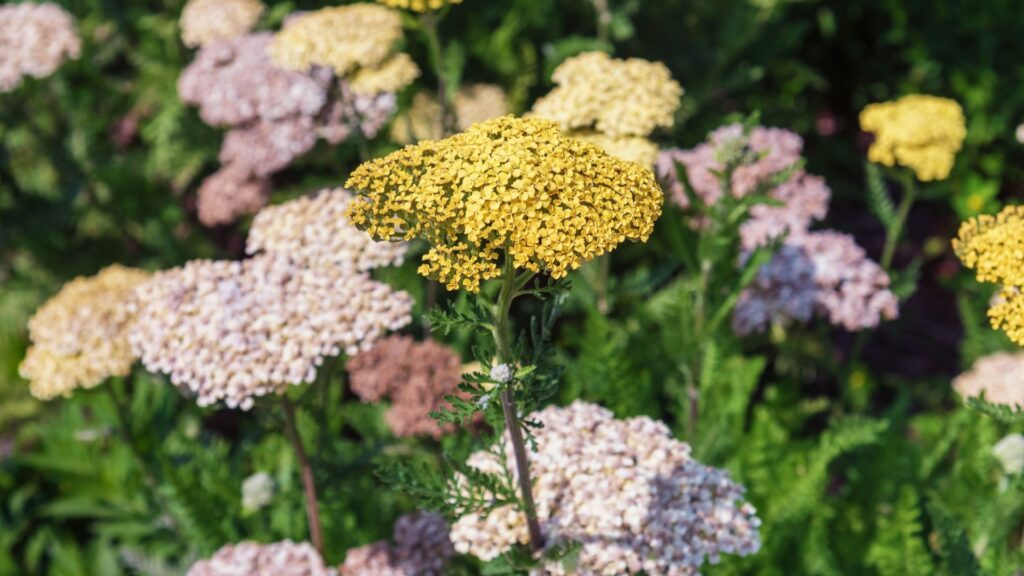Ground covers might look like a quick fix on the surface, but don’t be fooled — they can become a garden headache faster than you can say “invasive.” What starts as a tidy patch can spread like wildfire, elbowing out your favorite plants and turning your yard into a battleground.
If you’re tired of fighting that uphill battle, you’re in luck. These 16 lawn-friendly alternatives are the real deal — well-behaved, easygoing, and ready to pull their weight without stepping on anyone’s toes.
So, instead of rolling the dice on ground covers, stick with these smart picks that make lawn care a walk in the park.
1. Creeping Thyme
When walking through a garden path, nothing beats the aromatic surprise underfoot. Creeping thyme creates a fragrant carpet that releases its distinctive scent with each step. This low-growing herb stays politely within boundaries while filling gaps between stepping stones.
Hardy and drought-resistant, it thrives in sunny spots with minimal fuss. The tiny purple or pink flowers attract beneficial pollinators during summer months, adding splashes of color to otherwise mundane areas.
Unlike aggressive ground covers, creeping thyme coexists peacefully with surrounding plants. It’s perfect for rock gardens, path edges, or lawn alternatives in small areas where you want beauty without the battle.
2. Dwarf Mondo Grass
Looking for an elegant border that stays put? Dwarf mondo grass creates tidy, dark green tufts that remain exactly where you plant them. This grass-like perennial grows slowly, forming dense clumps that rarely exceed 4 inches in height.
Unlike invasive ground covers, dwarf mondo respects boundaries and won’t creep into lawn areas. Its fine texture provides beautiful contrast against larger plants or hardscape elements, adding sophisticated detail to garden designs.
Remarkably shade-tolerant, it thrives under trees where regular grass struggles. Consider using it to edge garden beds, surround water features, or create living mulch beneath shrubs where you want definition without maintenance headaches.
3. Ajuga
Tired of bare spots under trees where grass refuses to grow? Ajuga offers a solution with its attractive rosettes of glossy foliage in shades ranging from deep green to chocolate bronze. This adaptable perennial tolerates deep shade while providing visual interest year-round.
Spring brings spectacular spikes of blue-purple flowers that attract pollinators to otherwise quiet corners of the garden. Unlike some ground covers, ajuga stays relatively contained, spreading slowly enough to remain manageable with minimal maintenance.
Most varieties form a dense mat only 4-6 inches tall, making it perfect for suppressing weeds without overwhelming neighboring plants. Consider using it in woodland gardens, around tree bases, or as a living mulch in partial shade.
4. Sedum
Sunny, dry spots in the garden present unique challenges for most plants. Sedum thrives in these harsh conditions, offering colorful, drought-resistant solutions where other plants fail. These succulent perennials store water in fleshy leaves, creating carefree carpets in hot, exposed areas.
Low-growing varieties form tight mats of foliage in shades ranging from silvery blue to rich burgundy. Many produce star-shaped flowers in yellow, pink, or white that attract butterflies and beneficial insects throughout summer.
Unlike aggressive ground covers, most sedum spreads at a manageable pace that’s easy to control. Perfect for rock gardens, green roofs, or sunny borders, these tough plants provide year-round interest with virtually no maintenance.
5. Liriope
Border areas between lawn and garden beds often become maintenance headaches. Liriope solves this problem with its fountain-like growth habit that creates clean, defined edges. The arching, grass-like foliage forms tidy clumps that stay where you plant them.
Late summer brings spikes of purple or white flowers that resemble grape hyacinths, followed by black berries that persist into winter. Unlike invasive ground covers, liriope spreads slowly and predictably, making it easy to manage in the landscape.
Remarkably versatile, it thrives in sun or shade and tolerates poor soil conditions. Consider using it to line walkways, define garden edges, or create low-maintenance borders that provide structure and seasonal interest without competing with your lawn.
6. Ornamental Grasses
Movement and texture transform ordinary gardens into dynamic landscapes. Ornamental grasses provide both with their graceful forms and seasonal color changes. Unlike traditional ground covers, these stand-alone beauties create focal points rather than carpets.
Feather reed grass offers vertical interest with its upright habit and feathery plumes. Fountain grass arches elegantly, while blue fescue provides compact mounds of steely blue. Each variety brings unique character without the invasive tendencies of many ground covers.
Most ornamental grasses play well with lawns, creating clear visual boundaries without spreading aggressively. Consider using them as specimens, in groupings, or as living screens to divide garden rooms while maintaining harmony with surrounding turf.
7. Coral Bells
Garden edges need plants that provide year-round interest without maintenance headaches. Coral bells offer colorful foliage in shades ranging from caramel to purple to lime green, creating vibrant boundaries that complement lawns beautifully. These compact perennials form neat mounds that stay put.
Delicate flower stalks rise above the foliage in summer, attracting hummingbirds and adding vertical interest. Unlike spreading ground covers, coral bells grow in well-behaved clumps that won’t invade surrounding areas.
Semi-evergreen in many regions, they provide winter interest when other perennials disappear. Perfect for partly shaded borders, woodland garden edges, or container plantings, these versatile plants offer sophisticated color without the territorial tendencies of traditional ground covers.
8. Lamb’s Ear
Textural contrast makes garden designs more interesting and engaging. Lamb’s ear offers irresistibly touchable, velvety silver-gray foliage that creates striking visual interest against green lawns. This drought-tolerant perennial forms tidy mounds that stay relatively contained.
Tall spikes of purple flowers appear in summer, though many gardeners remove them to focus on the distinctive foliage. Unlike aggressive ground covers, lamb’s ear spreads slowly enough to remain manageable with minimal effort.
Remarkably drought-resistant once established, it thrives in poor soil where other plants struggle. Consider using it along sunny walkways, in rock gardens, or as a foreground plant in perennial borders where its unique texture and color can be fully appreciated without threatening lawn areas.
9. Russian Sage
Creating beautiful transitions between structured lawns and wild garden areas can be challenging. Russian sage offers an elegant solution with its airy, silver-blue foliage and lavender flower spikes that dance in summer breezes. This woody perennial maintains a respectful relationship with neighboring plants.
Unlike spreading ground covers, it forms upright clumps that provide vertical interest without horizontal invasion. The aromatic foliage repels deer and rabbits while attracting beneficial pollinators throughout the growing season.
Extremely drought-tolerant once established, Russian sage thrives in hot, sunny locations where other plants struggle. Consider using it in perennial borders, as a specimen plant, or in groups to create informal hedges that complement lawns without competing for territory.
10. Black-eyed Susan
Sunny garden spots deserve plants that match their cheerful disposition. Black-eyed Susan delivers with golden-yellow daisies that bloom prolifically from midsummer through fall. These native perennials form well-behaved clumps that provide reliable color without aggressive spreading.
Unlike invasive ground covers that take over, black-eyed Susans stay relatively contained, making them perfect companions for lawn areas. Their upright growth habit creates clear visual boundaries while attracting butterflies and beneficial insects.
Remarkably drought-tolerant once established, they thrive with minimal care in average garden soil. Consider using them in perennial borders, cottage gardens, or naturalistic plantings where their sunny blooms can brighten the landscape without threatening the integrity of nearby turf.
11. Coneflower
Garden borders need reliable performers that don’t require constant attention. Coneflowers offer months of colorful blooms on sturdy stems that stand up to summer storms without flopping. These native perennials form well-defined clumps that complement lawns beautifully.
Unlike invasive ground covers, coneflowers maintain a respectful footprint, spreading slowly through seeds rather than aggressive runners. The distinctive flowers with their raised central cones attract butterflies, bees, and birds throughout the growing season.
Remarkably drought-resistant once established, they thrive in full sun with minimal care. Consider using them in perennial borders, prairie-style plantings, or cutting gardens where their long-lasting blooms provide reliable color without threatening to overtake neighboring plants.
12. Daylily
Tough spots along driveways and sidewalks challenge even experienced gardeners. Daylilies thrive in these difficult areas, offering reliable color without invasive tendencies. These adaptable perennials form fountain-like clumps of arching foliage topped with trumpet-shaped blooms in countless colors.
Unlike aggressive ground covers that overtake everything in their path, daylilies stay in defined clumps that gradually increase in size. Modern reblooming varieties offer months of color rather than the fleeting display of heirloom types.
Remarkably forgiving of poor soil and inconsistent moisture, they perform beautifully with minimal attention. Consider using them to line driveways, soften fence lines, or create colorful borders that coexist peacefully with lawn areas while providing stunning seasonal displays.
13. Hosta
Shady areas where grass struggles often become problem spots in the landscape. Hostas transform these challenges into opportunities with their lush foliage in countless variations of green, blue, gold, and variegated patterns. These shade-loving perennials create dramatic ground-level interest without aggressive spreading.
Unlike invasive ground covers, hostas form discrete clumps that gradually increase in size while respecting neighboring plants. Their architectural leaves create beautiful textural contrast against lawn edges and hardscape elements.
Summer brings spikes of white or lavender flowers that attract hummingbirds and add vertical interest. Consider using them beneath trees, along north-facing foundations, or in woodland gardens where their bold foliage can brighten dim corners without threatening to overtake the landscape.
14. Astilbe
Damp, shady corners often become neglected afterthoughts in garden design. Astilbe transforms these challenging spots with feathery plumes of pink, red, white, or lavender flowers rising above fern-like foliage. These moisture-loving perennials create dramatic vertical interest without territorial aggression.
Unlike invasive ground covers, astilbe forms well-behaved clumps that stay where you plant them. The distinctive flower plumes dry attractively on the plant, providing extended seasonal interest into fall and winter.
Remarkably adaptable to varying light conditions, they perform best with consistent moisture. Consider using them in rain gardens, along stream banks, or in woodland settings where their elegant form can be appreciated without concern about them overwhelming neighboring plants or lawn areas.
15. Lavender
Garden borders deserve plants that engage multiple senses. Lavender delivers with its silvery foliage, purple flower spikes, and intoxicating fragrance that perfumes the air with each passing breeze. This Mediterranean herb creates defined mounds that maintain clear boundaries with surrounding areas.
Unlike aggressive ground covers, lavender stays relatively compact, forming woody shrublets that don’t send out runners or self-seed excessively. The aromatic qualities naturally repel many garden pests while attracting beneficial pollinators.
Extremely drought-tolerant once established, it thrives in poor, well-drained soil with minimal attention. Consider using it to edge walkways, create informal hedges, or accent perennial borders where its distinctive form and fragrance can be fully appreciated without threatening to overtake lawn areas.
16. Dianthus
Garden edges need plants that combine tidy habits with eye-catching features. Dianthus offers both with its blue-gray foliage and fragrant, fringed flowers in shades of pink, red, and white. These charming perennials form neat mounds that define spaces without crossing boundaries.
Unlike invasive ground covers, dianthus maintains a compact footprint that’s perfect for edging beds and borders. Many varieties offer the bonus of spicy clove fragrance that perfumes the garden throughout their blooming season.
Heat and drought-tolerant once established, they perform beautifully in full sun with minimal care. Consider using them to edge pathways, in rock gardens, or as front-of-border plants where their distinctive flowers and foliage can create clear transitions between lawn areas and garden beds.
17. Blue Star Creeper
Tiny spaces between pavers and garden stones often go overlooked, but Blue Star Creeper fills them with charm. This dainty perennial forms a soft, spreading mat of green foliage dotted with pale blue star-shaped flowers throughout spring and summer.
Unlike aggressive ground covers, Blue Star Creeper grows low and slow, creating a tidy, lawn-friendly alternative that respects garden boundaries. Its soft texture feels pleasant underfoot, making it perfect for walkways or small lawn replacements.
It thrives in sun to partial shade and handles light foot traffic with ease. Consider using it between stepping stones, around patio edges, or as a delicate filler in tight spaces where a traditional lawn can’t thrive without becoming unruly.
18. Yarrow
Looking for a tough, no-nonsense plant that adds a touch of wild charm? Yarrow fits the bill with its fern-like foliage and umbrella-shaped blooms in shades of yellow, pink, or white. This resilient perennial forms upright clumps that bring pollinator activity and visual texture to garden borders.
Unlike fast-spreading ground covers, yarrow grows in contained patches, gradually expanding without overwhelming nearby turf. Its drought tolerance and resistance to pests make it an ideal choice for eco-conscious gardeners.
Yarrow thrives in sunny spots with poor soil, making it a practical yet pretty solution for difficult areas. Use it along borders, in wildflower-style plantings, or to soften transitions between lawn and more naturalistic garden spaces.

